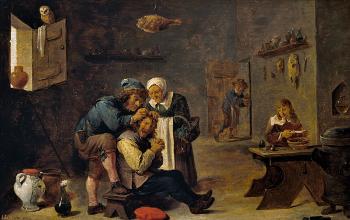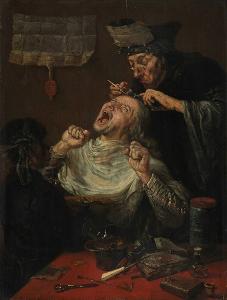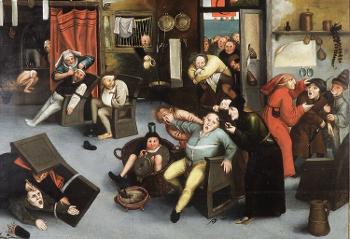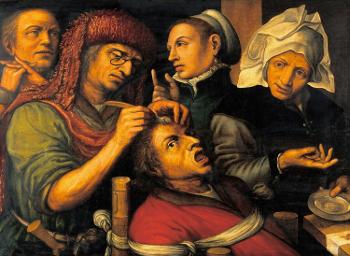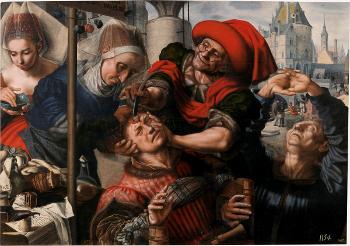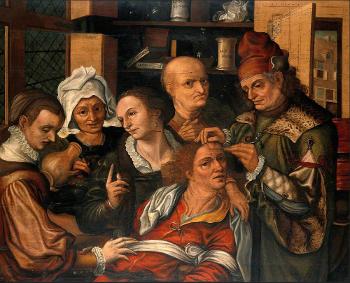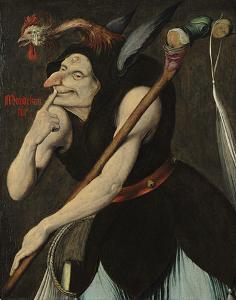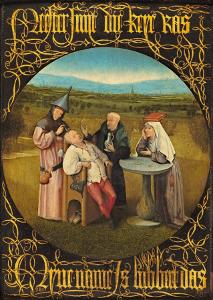Pieter Huys
A surgeon extracting the stone of folly
Oil on panel : 106 X 133,5 cm
Unsigned
London, Wellcome Collection
Another version, indistinctly signed, and dated possibly 1561, is in the Musée du Périgord, Périgeux
This is a comparative item
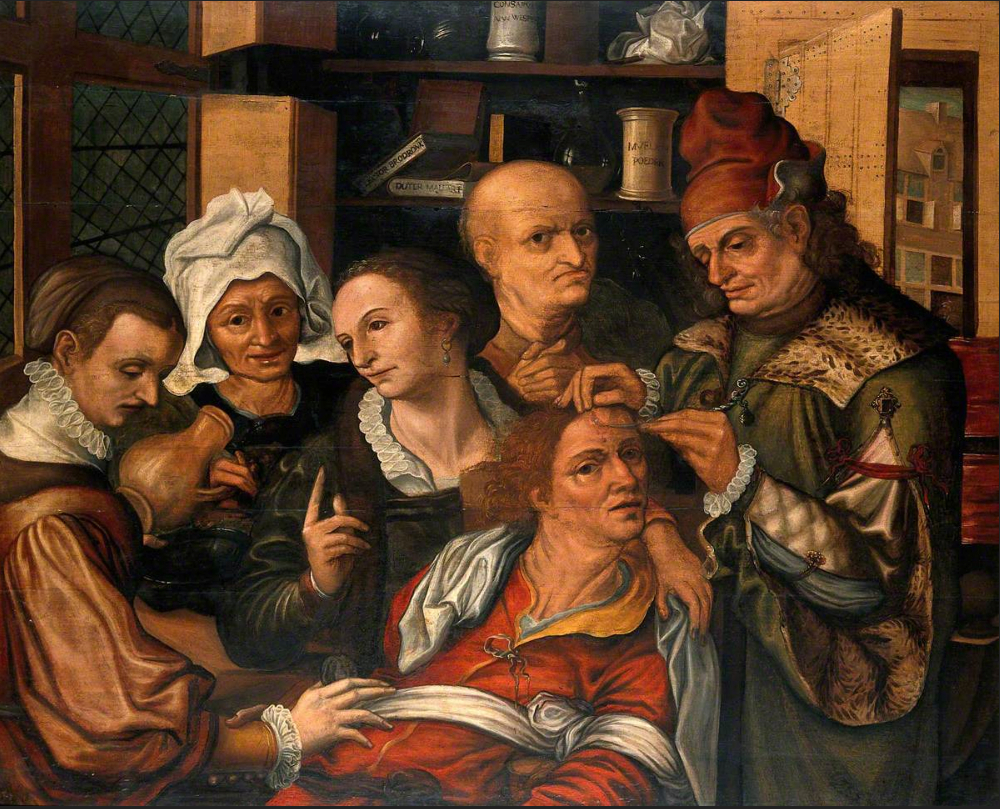
Painting for Sale
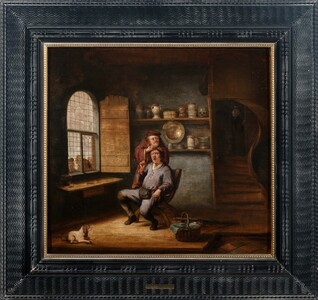
Spreeuwen, Jacob van
"The extraction of the stone of folly"
Comparative paintings
Click photos for more details



